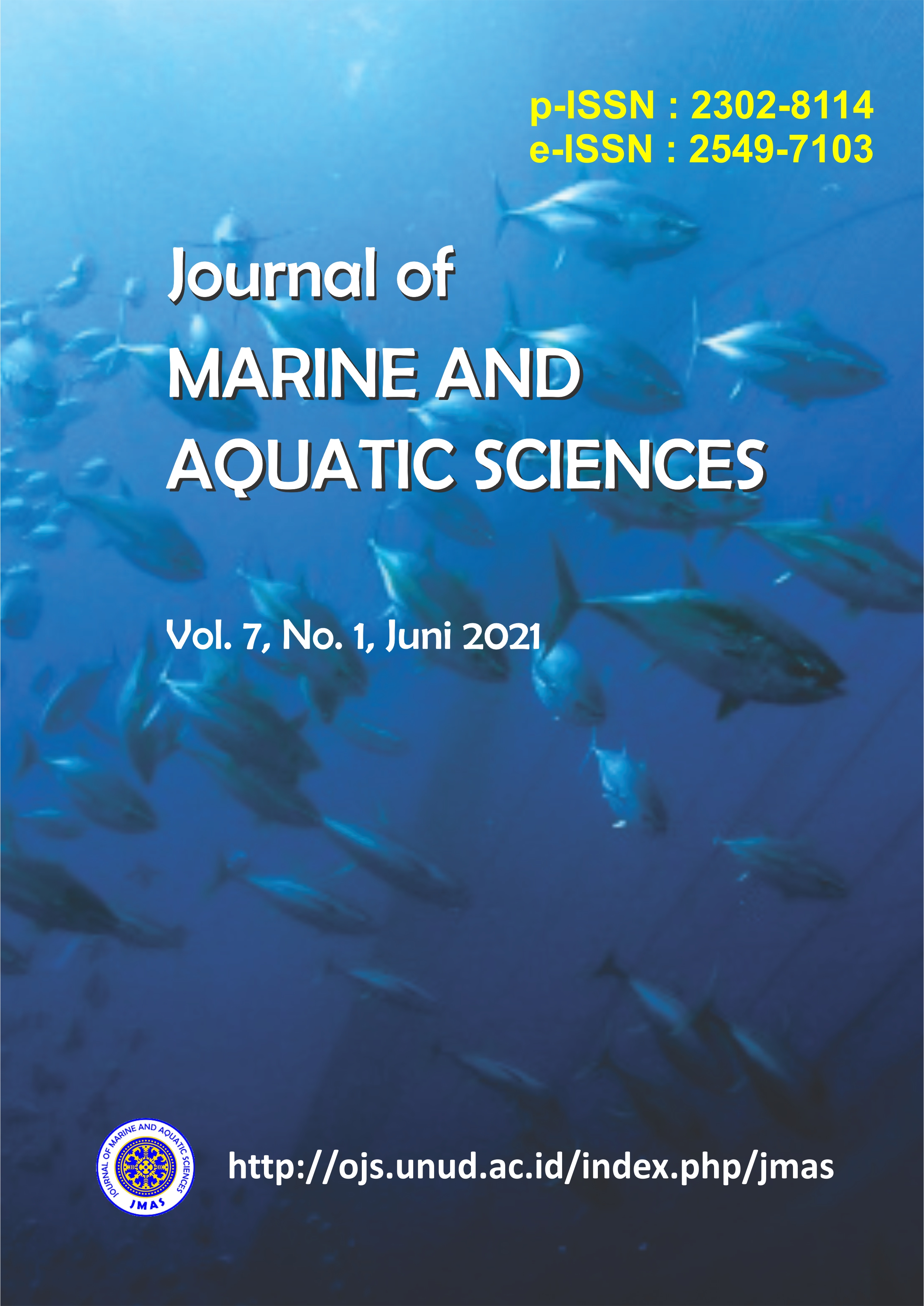Karakteristik Mikroplastik pada Daerah Feeding Ground Pari Manta, Big Manta Bay, Nusa Penida
Abstract
Microplastic, the pieces of plastic sized < 5 mm, are dangerous materials for marine organisms where if is ingested can anatomically and physiogically change the marine organism. Manta rays (Mobula alfredi) are filter feeders where they eat planktons and small fishes by filtering seawater. Mantas can filter up to hundreds cubic meter everyday, indicating the chances of it ingesting microplastics. This research was conducted to find out the microplastic characteristics at Big Manta Bay, Nusa Penida. Samples were obtained at two sites, North and South Big Manta Bay, by trawling 6 times on each site that represents Big Manta Bay using a plankton net. Samples were processed by separating plastics and organic matters using density separation method, and afterwards identified based on its type, quantity and size using a dissecting microscope. Results from the research came back stating the microplastic abundance reached 123,767 pieces/km2, with a total number of microplastics up to 174 pcs. The types of plastics most frequently found are fragments (44,69%), films (38,55%), fiber (14,53%) and foam (2,23%). Samples were also analysed using FTI-R Spectrometry, where plastics are identified as Polypropylene (PP) and Low-density Polyethylene (LDPE). Both polymers are the top two polymers that are produced globally.
Downloads

This work is licensed under a Creative Commons Attribution 3.0 International License.
Copyright 2012 - 2023 Journal of Marine and Aquatic Sciences (JMAS)
Published by Fakultas Kelautan dan Perikanan Universitas Udayana, Denpasar, Bali, Indonesia
JMAS (p-ISSN 2302-8114; e-ISSN 2549-7103)


